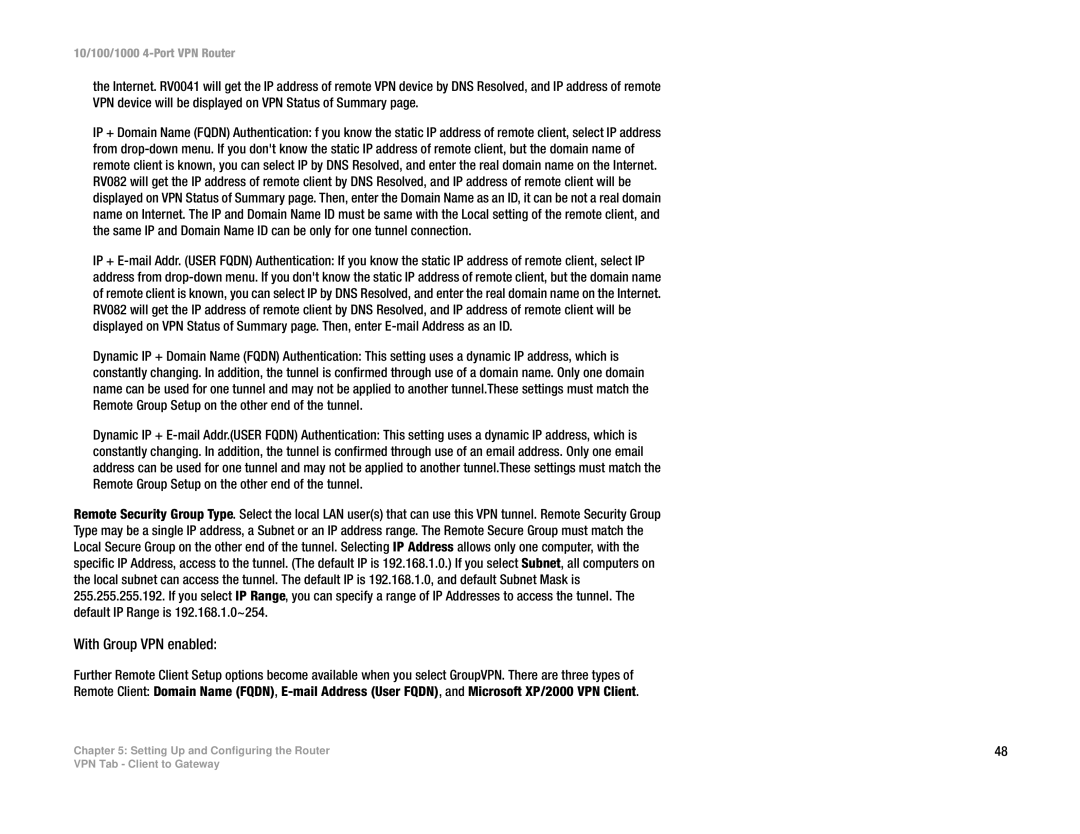10/100/1000 4-Port VPN Router
the Internet. RV0041 will get the IP address of remote VPN device by DNS Resolved, and IP address of remote VPN device will be displayed on VPN Status of Summary page.
IP + Domain Name (FQDN) Authentication: f you know the static IP address of remote client, select IP address from
IP +
Dynamic IP + Domain Name (FQDN) Authentication: This setting uses a dynamic IP address, which is constantly changing. In addition, the tunnel is confirmed through use of a domain name. Only one domain name can be used for one tunnel and may not be applied to another tunnel.These settings must match the Remote Group Setup on the other end of the tunnel.
Dynamic IP +
Remote Security Group Type. Select the local LAN user(s) that can use this VPN tunnel. Remote Security Group Type may be a single IP address, a Subnet or an IP address range. The Remote Secure Group must match the Local Secure Group on the other end of the tunnel. Selecting IP Address allows only one computer, with the specific IP Address, access to the tunnel. (The default IP is 192.168.1.0.) If you select Subnet, all computers on the local subnet can access the tunnel. The default IP is 192.168.1.0, and default Subnet Mask is 255.255.255.192. If you select IP Range, you can specify a range of IP Addresses to access the tunnel. The default IP Range is 192.168.1.0~254.
With Group VPN enabled:
Further Remote Client Setup options become available when you select GroupVPN. There are three types of
Remote Client: Domain Name (FQDN),
Chapter 5: Setting Up and Configuring the Router | 48 |
VPN Tab - Client to Gateway
